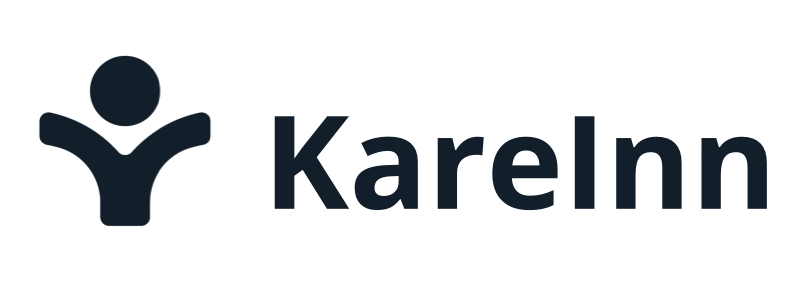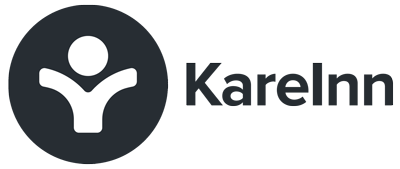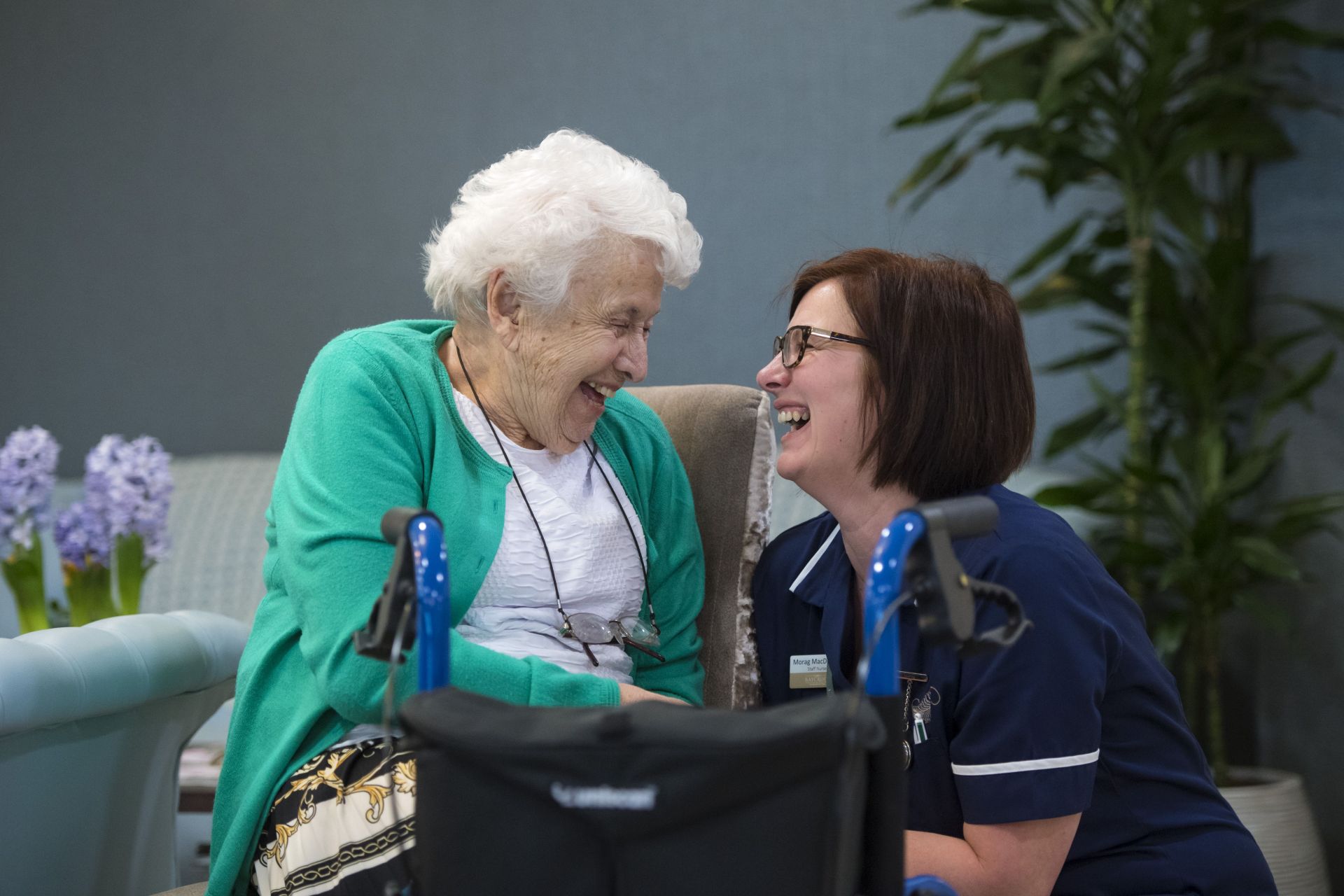Partnership Framework for Social Care
“We actually spent time at care homes, including sleeping there, and felt that the care planning element is, essentially, the spoke at the centre of the wheel.”
— John Lanyon, CFA and Co-Founder of KareInn
Each of Baycroft’s care homes used to contain a lot of ring binders and folders. The medical and relevant personal history of each resident detailed, meticulous notes on every day’s food, sleep quality, activities, physical, mental and emotional status… Vital information. Not comfortably portable, however. Not easily searchable, either. Thankfully, since 2017, Baycroft has been able to say, “There’s an app for that.” That app is KareInn, the brilliant care planning software that’s making things much easier for our care home managers and carers, and helping us provide an even better service for our residents. Baycroft spoke with KareInn founder, John Lanyon, to discuss the difference the software makes.

What inspired you to develop a software package for carers?
I actually gave up work for two years, perhaps 15 years ago now, to be a full-time carer for my mother, who had early-onset Alzheimer’s, and my grandmother, who had vascular dementia. That experience gave me a very personal insight into the effects of dementia; it’s hard to fully appreciate just how difficult it is for everyone concerned until you’ve been directly affected. I began volunteering with the Alzheimer’s Society. Because my background is working with a strategy for small and medium-sized businesses, the Society asked if I could help with its research strategy. So, for the last 15 years, I’ve been helping identify where the charity spends its research budget, across care, clinical, preventative medicine and so forth. It’s a smaller budget than you would think: £12m a year, whereas the total cost of dementia to the UK economy every year is about £26bn. And the Society is the largest care-based research funder in Europe!
Time and again I’d see that we’d run good research and come up with good insights, but delivering the results is difficult – it’s a disparate sector, with 12,000 different care home operators and 15,000 different care homes. About five years ago a couple of former colleagues of mine came to me, one of whom had been building technology for the NHS, the other a management consultant, wondering if there was a way they could help to do something for dementia. I looked around the market, had a think, and there were some good tools for very specific elements of care. We actually spent time at care homes, including sleeping there, and felt that the care planning element is, essentially, the spoke at the centre of the wheel. It touches every area of care, by definition. If you can make it easy to capture information and readily access that information, you can make much better use of it. That was the birth of KareInn.
When did you start working with Baycroft?
Baycroft came on board relatively early in the KareInn journey, perhaps a year later, and have been fantastic advocates. We were very careful in those first few years to only work with a small number of clients, no more than five new clients a year, chosen based on their own approach to delivering care. We needed to understand all their pain points, their challenges, from the care worker using the app day in, day out, to the care home managers who use it to coordinate care, to the regional managers who pull together all the reports and data. We’d actually started working largely with local authority care homes, where there is less money available for care and, arguably, they face the greatest challenges. Baycroft, as a very high-end care home operator, offered us a very different experience from which we could learn. We stayed at the Orpington Baycroft before it opened for a couple of nights, actually, and spent a lot of time with Baycroft generally in that first year or so. They were really helpful advocates, helping steer the product and how we think about it in the long term.
Tell us more about the thinking behind the KareInn product
We very much wanted an all-in-one, one-size-fits-all system. Each person within an organisation sees what they need to see; front-line staff see slightly different content to a nurse, who sees something slightly different to a care home manager, all the way up to the top of the care home operator. The underlying product is the same thing, of course, they’re just presented with what’s relevant and most helpful in their work. That also means we can choose what information can be displayed for family members and residents.
It’s a tool to collect information about each individual’s care. That does two things: it gives care home staff all the information they need, at a glance or with a few taps on a mobile device, to give better care to every resident; and it gives care home managers, regional managers and so on not just insights into each individual’s care, but the ability to identify trends and make changes to the way care is delivered, to help residents and staff have an even better experience.
The really nice thing for carers is that they have all this information at their fingertips. And lots of the information is presented visually, using graphs and suchlike, because it’s important that within two seconds that carers can see trends. Is this person’s weight dropping over time, for instance? The old-fashioned ring binder contains all that same information – but takes longer to capture it – and while it’s all there and available, it’s not accessible quickly. Nobody has the time to continuously update and review every resident’s complex health and lifestyle history and present that information in such an easy, visual way. And if you have an agency care worker offering cover, for example, they have no personal knowledge of individual residents but the app gives them lots of information very quickly.
The whole idea is to make giving care easier and more effective, to lead to an even higher quality of life for residents. Let me give you just one example of the difference it can make to analyse trends in the data the home captures: the falls dashboard. It displays the number of falls residents experience and when and where they happen. One care group client noticed that there was a greater number of falls at certain times of day – about 30% of the total falls – at very specific times of day: around the time of shift handovers. By spotting this, they tweaked how and where shift handovers took place and suddenly falls dropped at that time by 30%. With KareInn, Baycroft can look into their data and look to make improvements – no matter how good things already are.
What are the main features of the software and how do they help?
As I say, we’ve tried to create something that helps with every aspect of delivering and enabling better care. So perhaps the first feature is the care plan builder, which automatically creates a care plan based on clinical assessments. You can upload all the relevant records, so that’s right at everyone’s fingertips. From there, all the care notes and assessments are recorded against the resident’s records, so it’s continuously updated with each point of contact with the resident, accessible by all staff members with permission, and there’s an audit trail for managers to see exactly what has taken place and when. In fact, there’s a notification system built in so you can always see that carers have read and acknowledged key updates.
Then there’s ongoing. Staff can complete really detailed notes throughout the day, even using dictation. If there are injuries, you can upload photographs, record treatments, for example. You can set reminders for anything, from the routine day-to-day stuff through to a care plan review or even an audit. It also creates a shift handover summary, to makeshift changes simpler and more detailed at once. Nothing gets forgotten or misheard. From a management point of view, it’s really easy to check in on anyone resident, reduce any recurring incidents that happen and just be sure that the entire team is doing their job thoroughly and at the right times. care delivery monitoring
It’s also possible to set up clever workflows based on the home’s usual procedures. So, if someone was delayed issuing medication, just, for example, the system might trigger an alert to go to the care home manager. Or if a resident’s MUST score (that’s a series of assessments to identify malnutrition or weight issues) heads in the wrong direction, KareInn can trigger a care plan reassessment.
The management dashboard is where managers can assign tasks to staff and check progress at a glance, and see live timelines of what’s happening where. It pulls together reports – including on falls or accidents – and we’ve got some tools in there to capture and track information around food and fluids intake, weight, bowel and bladder movements, along with other things. Really helpful information that helps you spot those trends we talked about earlier and identify where either one resident needs particular help with something, or whether there’s a broader situation that could be made better by adjusting a certain way of working.
We can even offer integrations with care home finance systems, staff rostering systems, acoustic monitoring and more. And something like acoustic monitoring can have huge, quantifiable differences in health outcomes, with far fewer falls and injuries and even help pick up on signs of ill-health in the night.
There’s also a family portal. A care home can give access, on request, to a nominated family member to see information that’s important to them: about activities, mood and medical and care-based information to reassure them about their relative’s wellbeing. They can post messages to their residents, which care workers can share on their own devices. This was really a feature that’s come out of Covid and is still being refined, and we’ve had some really positive feedback about how families feel more involved and in touch.
Baycroft will be moving onto a new, upgraded version of the software in the next couple of months – the result of our analysing how the software has been used (and built) and making improvements. We generally release small tweaks very frequently; those incremental changes mean that it’s effortless for staff to see how something might work a bit differently. It’s a continuous evolution. Just like delivering great care.



